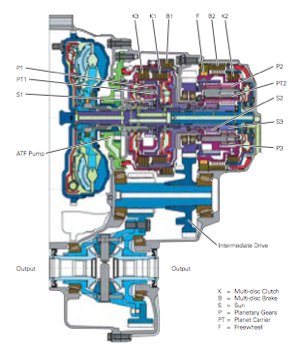Ease of operation has made automatic transmission vehicles more popular in America than manual transmission vehicles. Anyone that has ever driven a manual (used to be called “standard”) transmission knows how much fun they are! In either case, it is essential that you follow manufacturer recommendations for transmission service. Although Volkswagen touts their “lifetime” transmission fluid, the fact is, most mechanics will strongly recommend you schedule a Everett VW Automatic Transmission Service before you drive 40,00 miles.
transmission vehicles. Anyone that has ever driven a manual (used to be called “standard”) transmission knows how much fun they are! In either case, it is essential that you follow manufacturer recommendations for transmission service. Although Volkswagen touts their “lifetime” transmission fluid, the fact is, most mechanics will strongly recommend you schedule a Everett VW Automatic Transmission Service before you drive 40,00 miles.
Power Plant of Your VW
While it is obvious that the heart of a car’s power is the engine, the circulatory system is the transmission. The transmission transfers the power generated from combustion in the engine to the car’s wheels. Whether your vehicle has an automatic or a manual transmission, the complex engineering of each must be maintained to extend the life of your vehicle.
Measure the Power
The power from your vehicle’s engine is expressed in revolutions per minute (RPM). The transmission not only transfers the engine’s power to the wheels, it maintains the engine’s RPMs. This allows for multiple gear ratios for acceleration, deceleration and reversal. The gear ratios for an automatic transmission are adjusted as follows:
- Drive – gear ratio is adjusted by the transmission to synchronize the engine and the drive wheels
- Neutral – the engine is disengaged from the drive wheels by the transmission to keep your car from moving while the engine is running
- Reverse – the drive wheels are repositioned in the opposite direction by the transmission
- Park – the drive wheels are locked to prevent your car from rolling/turning
Component Arrangement
The inter-connected components of the transmission of your vehicle are arranged to distribute power from the engine to the drive wheels. Consistent maintenance is crucial to assure peak performance of your vehicle. The components are connected as follows:
- The Planetary Gear Sets are controlled by the
- Clutches and Bands, which are controlled by the
- Valve Body that is controlled by
- Transmission Fluid that is transferred by the
- Oil Pump that receives oil from the
- Hydraulic System
Automatic transmissions need Automatic Transmission Fluid (ATF) to operate. It is essential that you maintain recommended ATF levels for safe operation of your vehicle. Neglecting ATF levels will cause your transmission to fail! ATF replacement generally occurs between 30,000 to 50,000 miles.
It is important that you understand the difference between ATF flush and ATF replacement. A pressure flush could create more problems than it solves by loosening sediment, allowing it to circulate through your transmission. The more intricate, time consuming process of a full ATF replacement is strongly recommended!
An ATF replacement usually entails:
- Draining the ATF from the transmission
- Fill transmission with a detergent (per manufacturer’s recommendations), allowing the detergent to flow through until it runs clear
- Pour ATF into the transmission, allowing it to run through until it runs clear
- Install plug and fill to recommended level with clean ATF
Do-It-Yourself Tips
- Check ATF levels monthly and schedule a full inspection of your Mukilteo VW Automatic Transmission during every oil change
- If shifting is rough, have your car’s transmission thoroughly inspected immediately!
- If ATF levels are low, always add fluid. Be aware that decreased levels of ATF could indicate a leak and your transmission should be inspected immediately!
- Not all ATFs are equal! Be certain to consult your Owner’s Manual for correct ATF


Great service and great mechanics